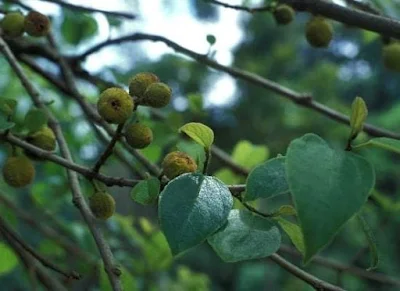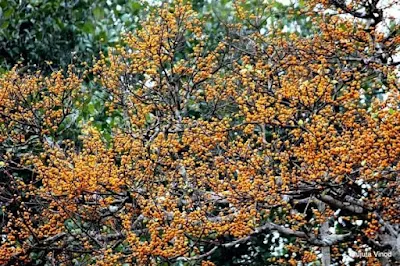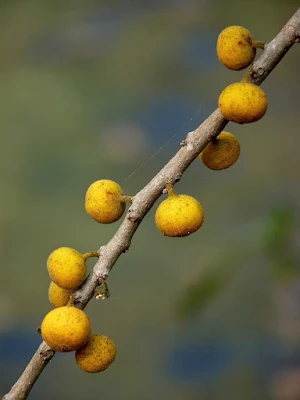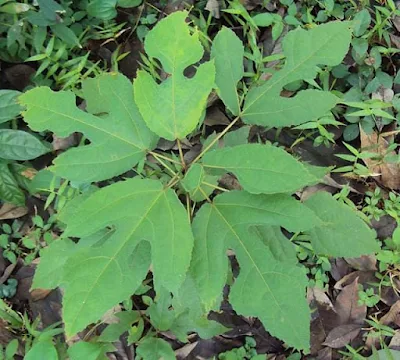Sandpaper tree | Did you know that Sandpaper tree's leaves with silica content are widely used as a source of sandpaper to smooth wood and calabashes, and to impart the last fine-grade polish to ivory apart from use in folk medicine?
Sandpaper tree
Did you know that Sandpaper tree's leaves with silica content are widely used as a source of sandpaper to smooth wood and calabashes, and to impart the last fine-grade polish to ivory apart from use in folk medicine?
The Sandpaper tree known by the scientific names Ficus exasperate and Ficus asperifolia is widely known as forest sandpaper fig, white fig, or sandpaper leaf or as Siamese rough bush. It is a deciduous and dipciuos species of plant, densely branched, in the Mulberry family Moraceae, native to Southern India (moslty on the Western Ghats and Eastern Ghats); Sri Lanka; Southeast Asia; tropical Africa from Senegal to Ethiopia to Angola; and in the Arabian countries such as Yemen. The tree's highly textured leaf surface gives it the name as the "sandpaper tree".
Sandpaper tree is a small to medium sized tree in Banyan group of figs. growing to 18 to 20 m metres. It is a middle-sized tree, semi ever green; bark pale grey or whitish becoming rough with age. It is an evergreen to semi-evergreen grows in forests up to 900 m to 1200 m elevation. Its young branchlets terete are seen with stout white scabrid hairs. Its leaves with milky white latex, dark green, hairless when mature but harshly rough on both sides ; margins minutely toothed, apex pointly, and base frequently asymmetric. Flowers (blooming and fruiting in February-April) are unisexual, pink, purplish or yellow, become orange or yellow, becomes orange or red at maturity, small and inconspicuous; male and female bloom on separate trees. Fruit is a small pea sized berry, pale yellow to orange when ripe, pulp sweet and edible. Its seeds are known to be dispersed by termites , who drag them into their nests, where they germinate. Besides sexual reproduction, the tree may grow with vegetative means propogated by seed and cutting. The latex of Ficus exasperata, usually watery and profuse, , are found mainly in the stem portions. Its leaves contains silica and thus used to smooth wood and calabashes. Its leaves are also used to impart the last fine-grade polish to ivory.
It is known by several synonyms such as Ficus asperrima Roxb, Ficus punctifera Warb, Ficus scabra Willd, Ficus serrata Forssk, Ficus silicea Sim. Its vernacular names in India are: Gargatti Aalada Mara,
ಅಡವಿ ಅತ್ತಿ Adavi Atti, ಗರಗತ್ತಿ Garagatti in Kannada; Parakam or
Therakam in Malayalam; Karvat करवत in Marathi; करपत्र Karapatra in Sanskrit; Irambarattam or Maramthinni Atthi in Tamil; Karaka Boddu కరక బొద్దు or Karasana or Siri Bodda in Telugu. It is also called Brahma's Banyan.
There is an interesting foklore of its use as a folk medicine which says that the sandpaper tree, with its rough leaves is sought after when a woman gives birth. It is said that her husband walks into the bush and gathers a root of the sandpaper tree. Once he has found the tree he walks back in direct line to his house and on the way, finds a dead tree, from which he cuts piece of root. When the husband gets back home, he burns the live sandpaper tree roots together with the dead tree root, collects the ashes, stirs it into a glass of water, and gives the concotion to his wife to drink, This potion is believed to ensure that the afterbirth (the placenta and fetal membranes discharged from the uterus after the birth of offspring) comes away and there is no infection.
Sandpaper tree leaves are used as a valuable medicinal plant in Indian medicine, Ayurveda. Leafy shoot is taken for the treatment of dysentery, edema, applied against jaundice or drunk as a diuritic. Leaves are used as antisepctic, analgesic, anti inflammatory, gastrointenstinal protective, oxtocis, nematicidal, hypotensive, antipyretic, for cough, venereal diseases; a maceration of the leaf is taken as an oxytocis for epilepsy and convulsions. It is said to be poisonous to goats and sheep, or harmful to cattle. In its native countries Exasperata leaves are used in traditional medicine by preparing a decoction (liquid) prepared by soaking the leaves in water, boiling and straining them.
Ficus exasperata has been used to provide shade in plantations and is planted as an avenue shade tree.
- Narasipur Char

























Comments
Post a Comment